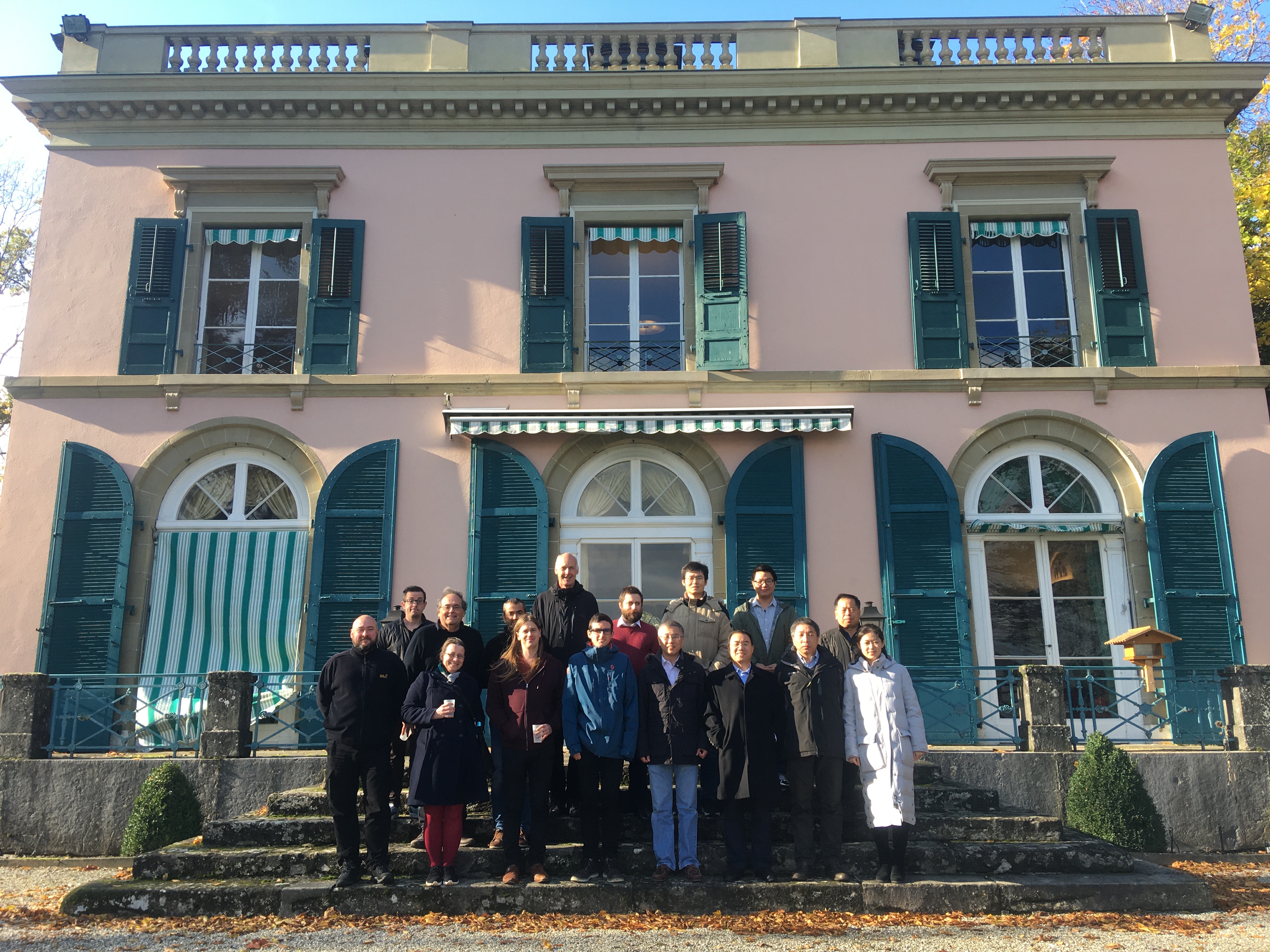"Team POLAR-2"
The University of Geneva,
National Center for Nuclear Research of Poland,
Max Plank Institute for Extra-terrestrial Physics of Germany, and
Institute of High Energy Physics of Chinese Academy of Sciences

The POLAR-2 collaboration during the first collaboration meeting at the lake of Geneva. Credit: Xin Wu.
"POLAR-2 is the follow-up of POLAR, one of the first dedicated Gamma-ray Burst polarization experiments, which was already supported by CMSA that installed it on the TG-2 space lab in 2016-2017. Thanks to the selection of POLAR-2 by UNOOSA and CMSA for implementation on the China's Space Station, the POLAR-2 collaboration will be able to continue its leading-edge investigation on Gamma-ray bursts, one of the most violent events occurring in the Universe, and will be able to make important contributions to the understanding of some of the most mysterious aspects related to black holes and neutron stars. The scientists from Switzerland, China, Poland, Germany will be able to strengthen their collaboration that has started over 10 years ago. Getting a project approved within 1 year after proposal submission, and now working towards a launch in 3 years is really motivating everyone in the team." - Prof. Agnieszka Pollo, Co-Project Investigator
AWARDS
China Space Station
The project "POLAR-2: Gamma-Ray Burst Polarimetry on the China Space Station" has been awarded in the first round of the China Space Station opportunity in 2019. It is a joint project to be implemented by four institutions from four countries: The University of Geneva from Switzerland, the National Center for Nuclear Research of Poland, the Max Plank Institute for Extra-terrestrial Physics of Germany, and the Institute of High Energy Physics of Chinese Academy of Sciences.
POLAR-2 will provide unique new insights into Gamma-ray bursts (GRBs), one of the most violent events occurring in the Universe. When a massive star collapsed on itself, or two neutron stars or a neutron star and a black hole merged, a large amount of energy is released within seconds in the form of high energy light particles, producing a burst of gamma-rays that can be observed in space above the Earth's atmosphere.
News
- POLAR-2 becomes a CERN recognized experiment (01 May 2020)
- First POLAR-2 Collaboration Meeting in Geneva (18 November 2019)
- CMSA-POLAR-2 Collaboration Agreement Signing Ceremony (18 November 2019)
Activities
-
POLAR-2 presents its design and science prospects at the International Cosmic Ray Conference 2021 (12 July 2021)
- POLAR-2 is invited to speak at the Marcel Grossmann Meeting 2021 (05 July 2021)
- POLAR-2 presented at the European Astronomical Society Meeting 2021 (26 June 2021)
- POLAR-2 presented at the AstroPOL Conference (01 April 2021)
- POLAR-2 presented at the SPIE Conference (01 November 2020)
Publications
- N. de Angelis et al. " Development and science perspectives of the POLAR-2 instrument: a large scale GRB polarimeter " Volume 395 - 37th International Cosmic Ray Conference (ICRC2021), DOI: https://doi.org/10.22323/1.395.0580
- M. Kole et al. " Gamma-Ray Polarization Results of the POLAR Mission and Future Prospects " Volume 395 - 37th International Cosmic Ray Conference (ICRC2021), DOI: https://doi.org/10.22323/1.395.0600
- J. Hulsman et al. " POLAR-2: a large scale gamma-ray polarimeter for GRBs " Proceedings Volume 11444, Space Telescopes and Instrumentation 2020: Ultraviolet to Gamma Ray; 114442V (2020), DOI: https://doi.org/10.1117/12.2559374
- M. Kole et al. " POLAR-2: The First Large Scale Gamma-ray Polarimeter ", Volume 358 - 36th International Cosmic Ray Conference (ICRC2019), DOI: https://doi.org/10.22323/1.358.0572

